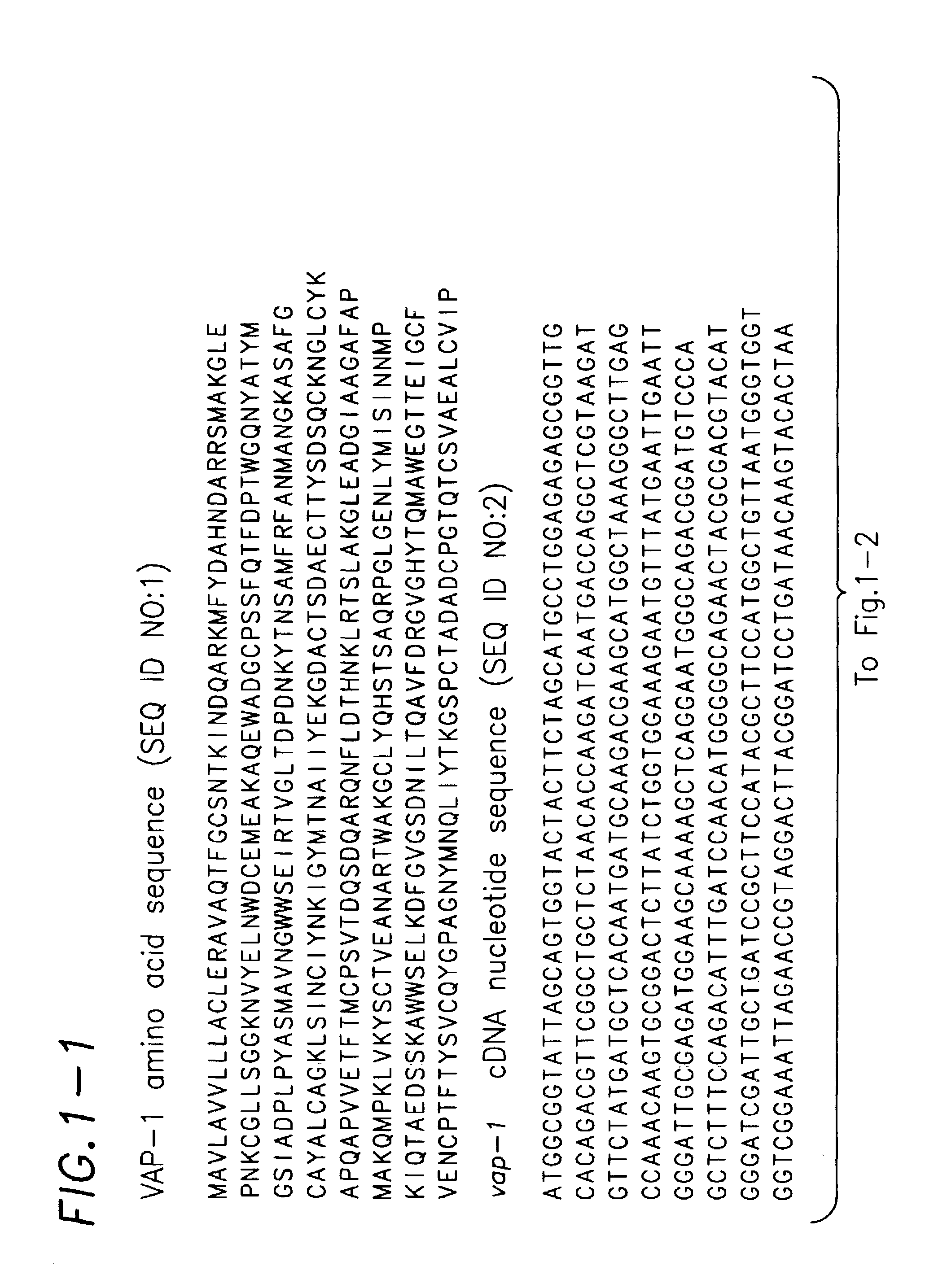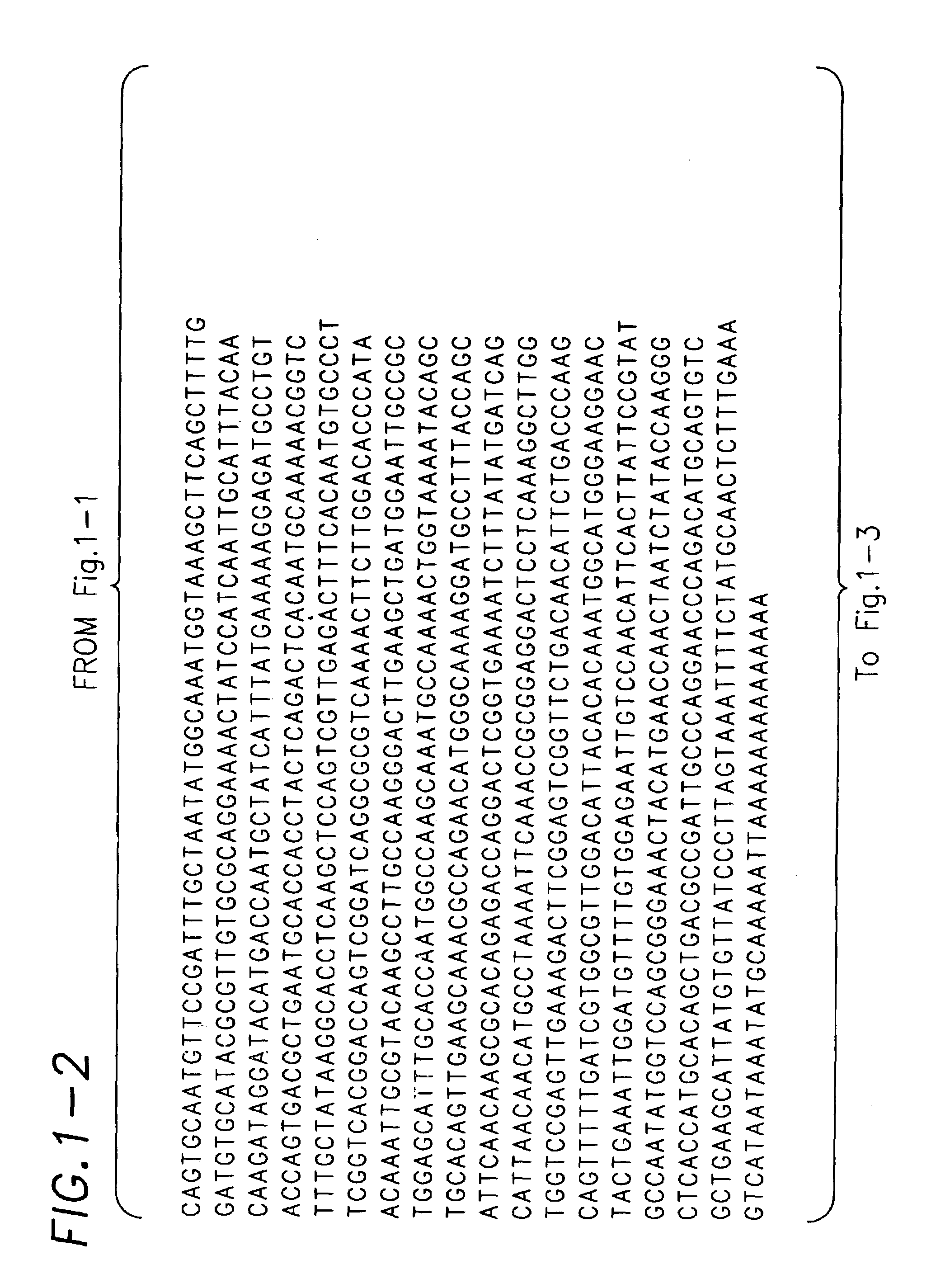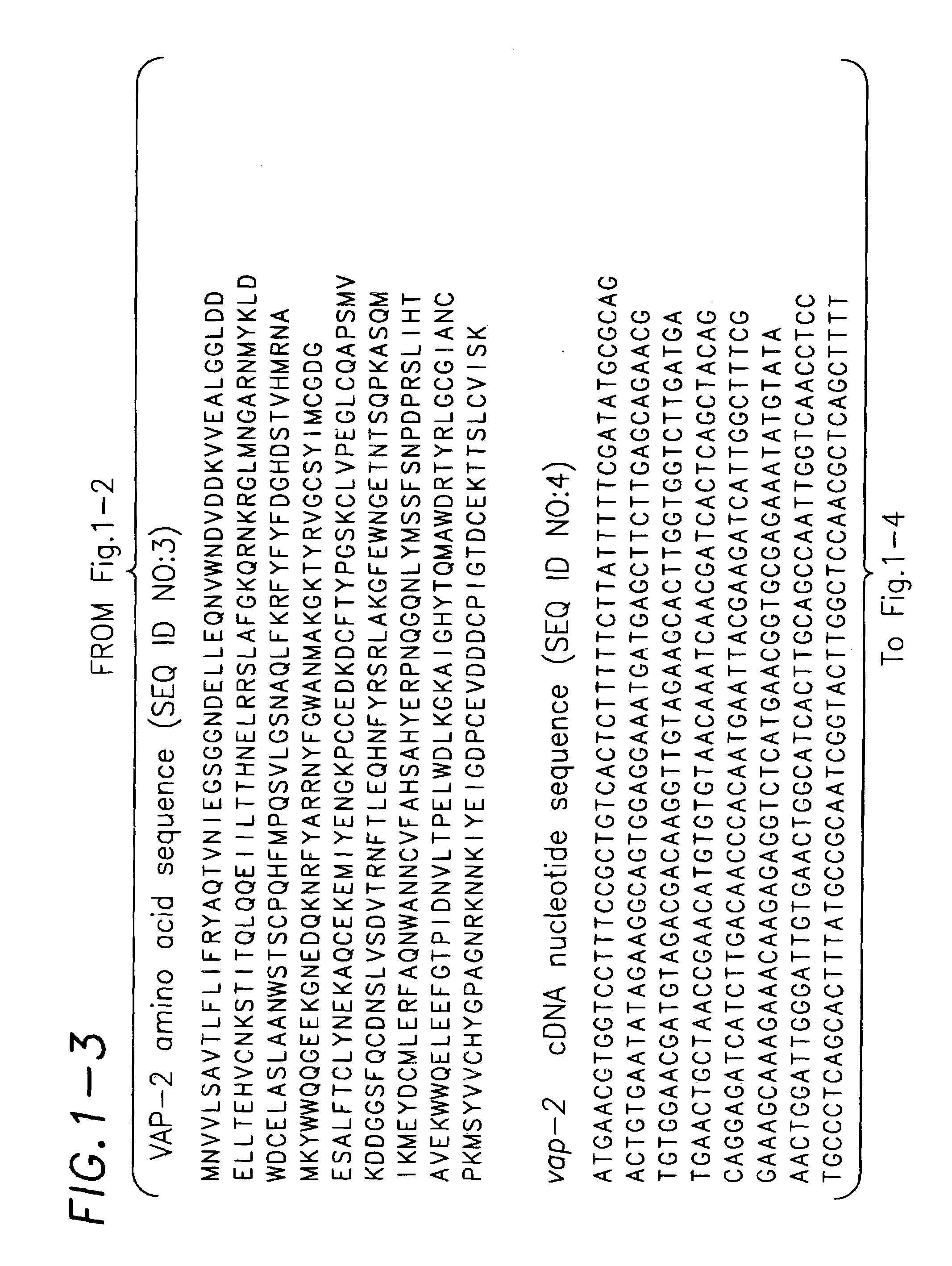Screens and assays for agents useful in controlling parasitic nematodes
a technology for parasitic nematodes and assays, applied in biochemistry apparatuses, biochemical equipment and processes, peptide/protein ingredients, etc., can solve the problems of nematode infections which are difficult if not impossible to cure with existing therapeutics, plant parasitic nematodes also represent major problems, and many billions of dollars in economic losses annually, so as to inhibit the processing of nematode secretion products and inhibit the secretion of nem
- Summary
- Abstract
- Description
- Claims
- Application Information
AI Technical Summary
Benefits of technology
Problems solved by technology
Method used
Image
Examples
example 1
Cloning and Sequence Analysis of C. elegans vap-1
Materials and Methods
[0153]An open reading frame on cosmid F11C7 (specifically F11C7.3) was identified as the C. elegans homolog of the gene encoding the A. caninum protein ASP-1 by searching the C. elegans genomic sequence database (available at www.sanger.ac.uk / Projects / C_elegans / blast_server.shtml) using the program TBLASTN (which compares an input amino acid sequence with translated genomic sequence). Primers F11C7.F1 (GCCAAACAAGTGCGGACTCTTATC=SEQ ID NO:5) and F11C7.R1 (GTGCTAGTTTTTGACGAACCCAG=SEQ ID NO:6) were designed based on the F11C7.3 sequence using the program MacVector. The primers were based on the cDNA of 1029 nucleotides originally predicted by the program Genefinder, which has been used to identify genes from genomic sequence, with the forward primer from the predicted first exon and the reverse primer from the predicted last exon. These primers were used to amplify a 1420 base pair genomic fragment from F11C7 cosmid D...
example 2
Identification of Members of the VA Protein Family in C. elegans
[0157]A BLAST search of the complete C. elegans genome using the VAP-1 amino acid sequence revealed over 20 homologs of VAP-1 with a BLASTP score of>100. The locations of these proteins are presented on the schematic map shown in FIG. 4. By far the closest homolog to vap-1 is a gene on the same chromosome (chromosome X), which includes the predicted genes T05A10.4 and T05A10.5. Applicants have discovered that these genes were mispredicted as separate genes by the genome sequence annotators and are, in fact, a single gene. This gene has been designated vap-2. Confirmation that vap-2 actually comprises both predicted genes T05A10.4 and T05A10.5 was obtained by performing RT-PCR on RNA obtained from wild type N2 worms using standard protocols. The RT-PCR primer used for first strand cDNA synthesis was designated T05A10 rt and had the following sequence: 5′-CAC AAT CTG TTC CAA TCG GGC-3′ (SEQ ID NO:8). This primer sequence...
example 3
Construction of vap-1::gfp and vap-1::nls-gfp Reporters
[0159]To construct a vap-1::gfp reporter gene, an ˜6.5 kB BalI fragment from the vap-1 genomic region was amplified from C. elegans N2 genomic DNA by long PCR using primers F11C7.F30 (5′-CTCCTGATAACTTTTAGAGGTTTGG-3′=SEQ ID NO: 11) and F11C7.R30 (5′-CCTAATGAGCACACTACCAGTTTTG-3′=SEQ ID NO. 12), which lie outside two BalI sites in the genomic sequence. The fragment contained approximately 4.8 kB of vap-1 sequence upstream from the vap-1 start codon (ATG), including the putative vap-1 promoter region, and further included approximately 1.6 kB of vap-1 coding sequence. Primers were designed using the program MacVector. Primer F11C7.F30 consists of 24 base pairs of sequence from cosmid F11C7, and primer F11C7.R30 consists of 23 base pairs of sequence from cosmid F11C7. PCR was performed using AmpliTaq® (Perkin Elmer) and Taq Extender™ (Stratagene). The following PCR amplification conditions were used. Denaturing: temperature=95 degree...
PUM
| Property | Measurement | Unit |
|---|---|---|
| Digital information | aaaaa | aaaaa |
| Fraction | aaaaa | aaaaa |
| Fraction | aaaaa | aaaaa |
Abstract
Description
Claims
Application Information
 Login to View More
Login to View More - R&D
- Intellectual Property
- Life Sciences
- Materials
- Tech Scout
- Unparalleled Data Quality
- Higher Quality Content
- 60% Fewer Hallucinations
Browse by: Latest US Patents, China's latest patents, Technical Efficacy Thesaurus, Application Domain, Technology Topic, Popular Technical Reports.
© 2025 PatSnap. All rights reserved.Legal|Privacy policy|Modern Slavery Act Transparency Statement|Sitemap|About US| Contact US: help@patsnap.com



